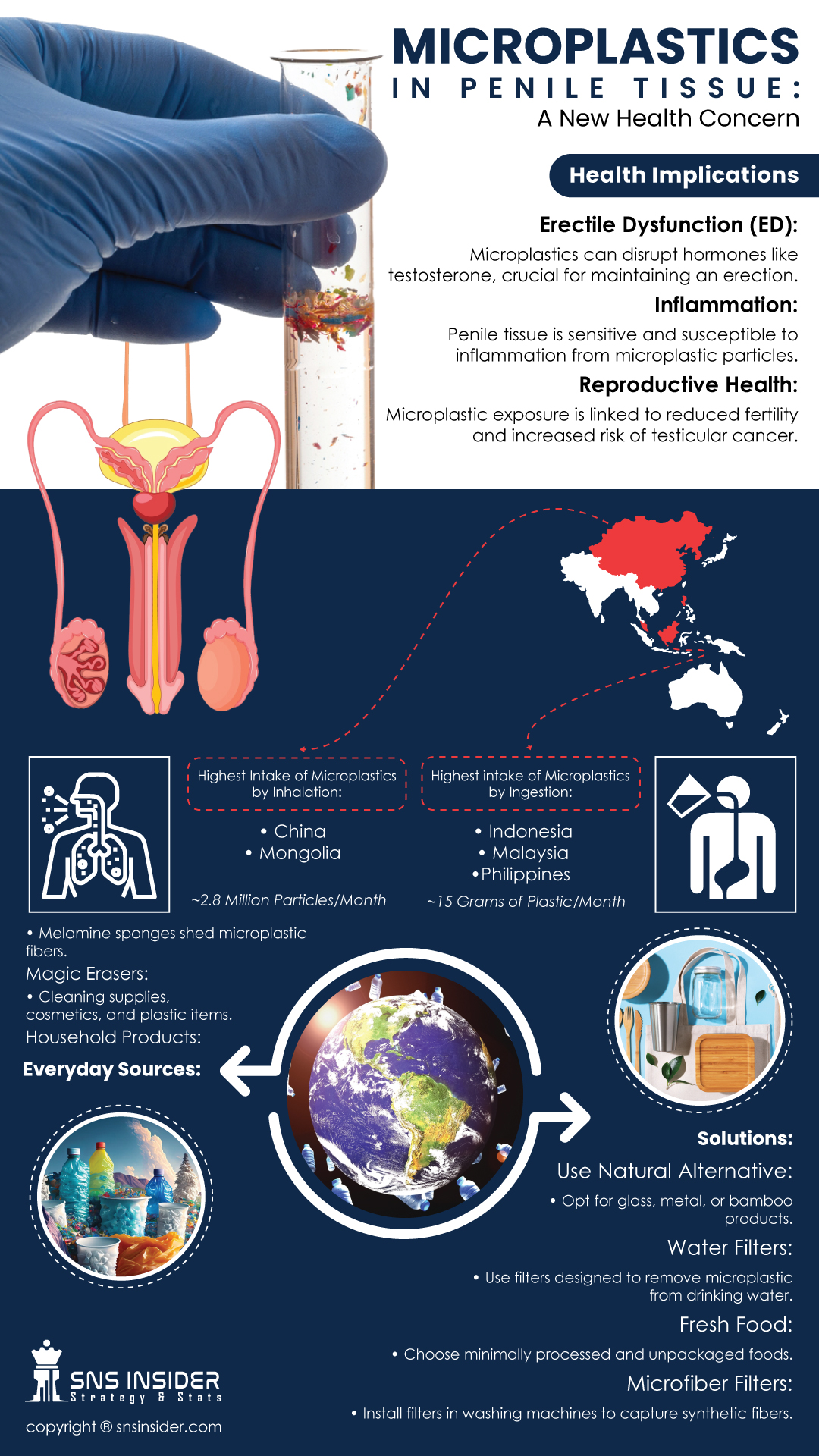
An Unlikely Place for a Common Issue
The finding, which suggests the particles could enter the bloodstream and be widely distributed throughout the body, raises questions about their effects on human health. Our environment is filled with microplastics, which are plastic particles up to 5mm in size. They come from the degradation of larger plastics such as industrial processes and consumer products like cosmetics, and cleaning supplies, among others.
Potential Implications for Male Erectile Dysfunction and Reproductive Health
Thus, the detection of microplastics in penile tissue is alarming of its likely health peculiarity. Likely to be associated with erectile dysfunction (ED), one of the chief concerns Penile tissues is very vascular and has a high density of nerve endings in it which means it is going to be very sensitive when compared to any other bodily disruption. Endocrine-disrupting chemicals such as phthalates and BPA tend to associate with microplastics. These chemicals have shown a negative hormonal effect on testosterone, crucial for keeping an erection.
With erectile dysfunction being a sign of poor vascular health or nerve damage, either scenario would only worsen with the inflammatory responses that micro-plastic contamination tends to induce. Prospects of microplastics in the shopping basket for their long-term effects can reduce fertility and increase risk of testicular cancer.
Southeast Asia Is The Largest Contributor to Global Microplastics Consumption
A study published in the journal Environmental Science & Technology found that though microplastic exposure is a global problem, it ranges by region in scale. Indonesia, Malaysia, and the Philippines are among top consumers of microplastics in the world. Many countries could reference Southeast Asia as an unfortunate demonstration of how much plastic humans ingest. For example, Indonesians eat around 15 grams of microplastics every month, while the figure is 2.4 grams per month in the US.
Regarding inhalation, Mongolia and China rank highest, with people inhaling more than 2.8 million microplastic particles a month. At the top of victim list is the United Kingdom, followed closely by Ireland and a distant United States with fewer estimated particles inhaled per month at 10,500. The lower inhalation speed could perhaps be attributed to more powerful management and significantly less industrial fresh air pollution in contrast by using some other type of nations around the world.
Everyday Items that can be dangerous
Microplastics are present in food, but also in water and non-everyday household objects. Melamine sponges, the marketed-as "magic erasers" that are excellent at cleaning away stubborn stains, are a major contributor to microplastic pollution. Researchers estimated the sponges could shed more than a trillion microplastic fibers into the environment per month, according to a study. These particles end up in the water and subsequently in the diet of wildlife - and further up the food chain.
How to Reduce Your Microplastic Exposure
Because microplastics are all pervasive, everyone will have to take steps to reduce their exposure. So, what can be done to actually address this in practical terms?
Use Natural Alternatives: Whenever possible, use natural materials such as glass, metal or bamboo instead of plastic. Items like storage containers, water bottles, and utensils. Water filtration systems to help reduce microplastics in drinking water. Ensure that the filter used is designed to wipe out microplastics from water.
Eat Fresh Instead of Processed: We know that the packaging and manufacturing process result in higher amounts of microplastics for processed and packaged foods. Choose food that is closest to its natural state as possible.
Run Laundry through Microfiber Filters: Synthetic fabrics release microplastic fibers into wastewater during washing. A microfiber filter can help capture those particles before they enter the environment.
Back up Laws and Studies: Push for tougher laws on plastic production and waste. Funding research to learn more about what the health impacts of microplastics and to find alternatives that are less harmful to our planet.
Conclusion: And A Call to Including More Awareness and Actions
The detection of microplastics in penile tissue demonstrates the impact of microplastic contamination and the importance of action on a social scale. While the health effects of microplastics have long been suspected, the possibility that microplastics could be linked to erectile dysfunction and other reproductive health issues only adds to what is already a cause of serious concern. Given that human exposure to microplastics remains a major and global concern, immediate action is required from all stakeholders in communities and organized at the government level to reduce their presence in our environment and our bodies.
While the entire scope of health problems in relation to microplastics is still unclear, it would seem a wise and preventive move to minimise our exposure to these ubiquitous particles.